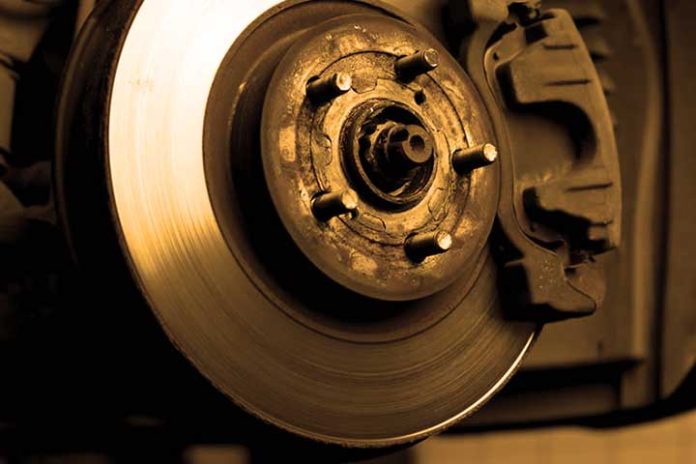Disc brake rotors are built to last, but they ultimately need to be replaced. Your disc brake rotors will give you some warning signals if they need to be replaced, so keep an eye out for them before they cause damage to other components and need costly repairs. Some examples of these symptoms include:
An annoying squeal when you step on the brake
A screeching sound when you press the brakes is the first sign of a malfunctioning disc brake. Disc brakes that are deformed, rotors that have been damaged, and brake pads that are worn out are just some of the possible causes. If the disc brakes are warped, the brake pads will wear out sooner than usual.
Look out for vibrations at times
If you feel significant vibrations while using the brakes, you should get your brake rotor discs inspected. The rotor’s damage or warping might also cause this vibration. Damages may range from a little score mark on the rotor’s surface to more serious issues like poor grooves.
The need for a more protracted halt
If stopping distances increase, it’s likely due to faulty brakes. They are risky since you can’t stop your car in an emergency or under regular conditions. See a qualified mechanic about these. Other causes of increased stopping distances include problems with the brake lines, broken brake calipers, and leaking brake fluids.
Also Read: The Smart Car Hacked: This Might Be The Major Problem In The Modern World
Red alert light
Indicators on the dashboard of certain vehicles flash red when brake maintenance is needed. Most sensors wear out at the same time as brake pads and need replacement at the same time. You should double-check your vehicle’s handbook before relying on this approach, since not all vehicles have brake pad sensors.
Blades with slots
Slotted rotors reduce the variation in stopping distances caused by brake pad outgassing and the accumulation of particles between the pads and the rotors. Slots chop away glaze development brought on by pad overheating, gradually exposing new pad material with each braking application, resulting in more consistent pad performance over the long run. The sacrifice is a shorter lifespan for the pad. There is a little increase in friction with slotted rotors compared to those with a smooth finish, which improves bite but is less crucial in today’s world thanks to contemporary pad compounds.
Slotted rotors are the preferred option for competitive cars wherever possible. When more bite is needed for towing, such as with a big truck or SUV, and more aggressive pads are not an option, they are the best option.
Low-frequency rumbling and pedal flutter may be heard when slowing down suddenly from high speeds, and pad and rotor life is reduced marginally. Rotor cracking is accelerated compared to rotors with no holes or well machined slots if the slots are not machined all the way to the outer edges.
Gears with holes drilled into them
Bite and friction are increased somewhat with drilled rotors compared to slotted ones. Comparable to slotted, the coefficient of friction of pads is more stable over time. If you live in a place like Seattle or Singapore where it rains a lot, wet bite rotors may be your best option. Depending on rotor size and drill pattern, we should expect a weight savings of 0.15 to 0.25 pounds per rotor.
One potential drawback is irregular rotor wear, which manifests as concentric groove development but is mostly a cosmetic issue. Rapid cracking and spreading are significant drawbacks in high-stress racing circumstances. This is why, unless mandated by the regulations, drilled rotors should be avoided in racecars. It’s a popular misconception that, because of their uneven surfaces, these rotors can’t compare to the efficiency of smooth rotors and are used solely for aesthetic purposes. The exact opposite is correct.
Also Read: Can I Learn To Repair My Car On YouTube?

